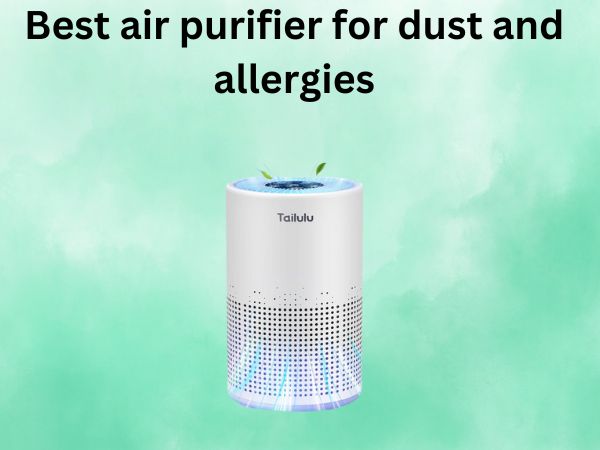How to Build an Air Purifier at Home Easily
In today’s world, where air pollution is a growing concern, it’s more important than ever to ensure the air we breathe is clean and healthy. While commercial air purifiers can be effective, they can also be quite expensive. But did you know you can easily build your own air purifier at home using common household items? That’s right – with a few simple materials and a bit of DIY know-how, you can create a highly effective air cleaning system right in your own living space.
In this comprehensive guide, I’ll walk you through the step-by-step process of building a homemade air purifier from scratch. Whether you’re looking to improve the air quality in your home, office, or any other indoor space, this DIY project is a great way to breathe easier and save money at the same time. So, let’s dive in and learn how to build your very own air purifier!
Table of Contents
Why Build a DIY Air Purifier?
There are several compelling reasons to consider building a homemade air purifier instead of relying on a commercial model. First and foremost, it’s a more cost-effective solution. Commercial air purifiers can easily cost hundreds or even thousands of dollars, making them inaccessible for many people. With a DIY air purifier, you can often create an equally effective system for a fraction of the cost.
Another benefit of a DIY air purifier is the ability to customize it to your specific needs. Commercial models come in a one-size-fits-all approach, but when you build your own, you can tailor the size, features, and functionality to match the size of your space and your air quality concerns. This allows you to create a highly efficient and personalized air cleaning system.
Finally, building a DIY air purifier can be a fun and rewarding project. It’s a great way to get hands-on with home improvement, learn new skills, and take an active role in improving the air quality in your living or work environment. Plus, you’ll have the satisfaction of knowing you created a functional and effective air purifier all on your own.
The Key Components of a Homemade Air Purifier
Before we dive into the step-by-step instructions, let’s take a closer look at the essential components that make up a DIY air purifier:
- Fan: The fan is the heart of the air purifier, responsible for drawing in dirty air and pushing out clean air. You’ll want to choose a high-quality, energy-efficient fan to power your system.
- Filter: The filter is what actually removes the pollutants and contaminants from the air. Common filter materials include HEPA (high-efficiency particulate air) filters, activated carbon filters, and pre-filters.
- Housing: The housing is the physical structure that holds all the components together. This can be as simple as a cardboard box or as elaborate as a custom-built enclosure.
- Power Source: Depending on the size and complexity of your DIY air purifier, you may need a power source such as an electrical outlet or battery pack to keep your fan running.
With these key components in mind, let’s dive into the step-by-step process of building your own air purifier at home.
Step 1: Choose Your Fan
The first step in building your DIY air purifier is selecting the right fan. This is a crucial decision, as the fan will determine the overall airflow and effectiveness of your system. When choosing a fan, consider the size of the space you want to purify and look for a model that can handle the necessary air volume.
A good rule of thumb is to choose a fan that can move at least 300 cubic feet of air per minute (CFM) for a small room, and up to 600 CFM for a larger space. Look for fans that are energy-efficient and quiet, as you’ll want your air purifier to run smoothly without disrupting your living or work environment.
Step 2: Select Your Filter
The filter is the workhorse of your DIY air purifier, responsible for trapping and removing airborne pollutants. When it comes to filters, there are several options to choose from:
- HEPA Filters: HEPA (High-Efficiency Particulate Air) filters are considered the gold standard for air purification, capable of removing up to 99.97% of airborne particles as small as 0.3 microns. These filters are highly effective at capturing dust, pollen, pet dander, and other common indoor pollutants.
- Activated Carbon Filters: Activated carbon filters are great for removing odors, volatile organic compounds (VOCs), and other gaseous pollutants. They can complement a HEPA filter to create a more comprehensive air purification system.
- Pre-Filters: Pre-filters are often used in conjunction with HEPA or carbon filters to capture larger particles, extending the life of the primary filter.
When selecting your filters, consider the specific air quality issues you’re trying to address, as well as the size of your space. It’s often best to use a combination of filter types for maximum effectiveness.
Step 3: Assemble the Housing
Now that you’ve chosen your fan and filters, it’s time to build the housing for your DIY air purifier. This can be as simple or as complex as you’d like, depending on your skill level and the materials you have available.
One of the easiest options is to use a cardboard box or plastic storage container as the base. Simply cut a hole in one side for the fan to draw in air, and another hole on the opposite side for the filtered air to be pushed out. You can then attach your filters to the inside of the housing using velcro, tape, or other mounting methods.
For a more polished and durable look, you can build a custom enclosure out of wood, acrylic, or other materials. This allows you to create a sleek, integrated design that fits seamlessly into your living or work space. Just be sure to leave enough room inside for the fan and filters to operate efficiently.
Step 4: Assemble and Test Your DIY Air Purifier
With the fan, filters, and housing in place, it’s time to assemble your DIY air purifier. Start by securely mounting the fan in the housing, ensuring it’s positioned to draw air through the filters and push the cleaned air out the other side.
Next, install your filters, making sure they’re properly aligned and sealed to prevent air leaks. If you’re using multiple filter types, be sure to arrange them in the correct order (e.g., pre-filter, HEPA filter, carbon filter).
Once everything is in place, plug in your air purifier and turn it on. Take a moment to observe the airflow, check for any unusual noises or vibrations, and ensure the filters are working as intended. You may need to make some adjustments to optimize the performance of your homemade air purifier.
Conclusion: Enjoy Cleaner, Fresher Air at Home
Congratulations! You’ve now successfully built your very own DIY air purifier, and you’re well on your way to breathing easier and enjoying cleaner, healthier air in your home or office. Remember, the key to maintaining an effective air purifier is regular filter maintenance and replacement, so be sure to stay on top of that.
If you have any questions or encounter any challenges along the way, don’t hesitate to reach out to me or consult additional resources. Building a DIY air purifier may seem daunting at first, but with a little bit of effort and the right information, you can create a highly effective and personalized air cleaning system that will serve you well for years to come.
FAQ
How often should I replace the filters in my DIY air purifier?
The frequency of filter replacement will depend on factors like the size of your space, the air quality, and the type of filters you’re using. As a general rule, you should replace HEPA filters every 6-12 months and activated carbon filters every 3-6 months. Be sure to regularly check the condition of your filters and replace them as needed to maintain optimal performance.
Can I use a regular box fan instead of a dedicated air purifier fan?
Yes, you can certainly use a regular box fan as the air-moving component of your DIY air purifier. Just be sure to choose a high-quality, energy-efficient fan that can provide sufficient airflow for the size of your space. Keep in mind that a box fan may be louder and less powerful than a dedicated air purifier fan, so you may need to experiment to find the right balance of performance and noise levels.
Do I need to use both HEPA and carbon filters in my homemade air purifier?
While it’s not strictly necessary to use both HEPA and carbon filters, combining the two can provide a more comprehensive air purification solution. HEPA filters are excellent at removing particulate matter, while carbon filters are better suited for removing gaseous pollutants and odors. Using both filter types in your DIY air purifier can help ensure that a wider range of airborne contaminants are captured and removed from the air.
How do I know if my homemade air purifier is working effectively?
There are a few ways to evaluate the performance of your DIY air purifier. You can use a standalone air quality monitor to track the levels of pollutants in the room before and after running the purifier. Additionally, you can simply observe the airflow and cleanliness of the air being pushed out of the purifier. If you notice a significant difference in the air quality, that’s a good indication that your homemade system is working as intended.
Can I use my DIY air purifier in multiple rooms?
Absolutely! One of the benefits of building your own air purifier is the ability to customize it to your needs. If you want to use the purifier in multiple rooms, you can either create a portable, self-contained unit that you can move around, or you can build multiple purifiers to strategically place throughout your home or office. Just be sure to size the fan and filter capacity appropriately for the total square footage you want to cover.






